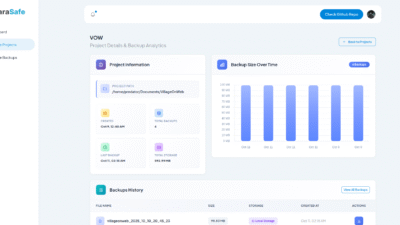Introduction
In today’s fast-paced digital landscape, businesses aim to build applications that are scalable, cost-efficient, and quick to deploy. Amazon Web Services (AWS) offers a range of tools that simplify this process, and one of the most revolutionary among them is AWS Lambda. Lambda allows developers to run code without provisioning or managing servers, enabling true serverless architecture. This article explores the fundamentals of AWS Lambda, its advantages, common use cases, and best practices for optimizing serverless applications.
What is AWS Lambda?
AWS Lambda is a compute service that runs your code in response to events and automatically manages the underlying compute resources. Developers can write their functions in supported languages like Python, Node.js, Java, and Go. Instead of worrying about servers, scaling, or maintenance, Lambda executes code on demand and scales automatically.
For example, if a file is uploaded to Amazon S3, a Lambda function can be triggered to process the file. Similarly, it can be used to respond to API requests, process data streams, or integrate with other AWS services.
Key Benefits of AWS Lambda
- Cost Efficiency – With Lambda, you only pay for the compute time consumed. There are no upfront costs, and charges are based on the number of requests and execution duration.
- Automatic Scaling – Lambda scales automatically depending on the number of incoming requests. Whether it’s a few requests per day or thousands per second, Lambda adapts seamlessly.
- No Server Management – Developers focus on code, while AWS handles server provisioning, patching, and scaling.
- Event-Driven Execution – Lambda integrates with many AWS services such as S3, DynamoDB, CloudWatch, and API Gateway, enabling powerful event-driven workflows.
- High Availability – AWS ensures Lambda functions run with built-in fault tolerance across multiple availability zones.
Common Use Cases of AWS Lambda
- Data Processing Pipelines – Automatically process data uploaded to S3, such as resizing images, compressing files, or analyzing logs.
- Web and Mobile Backends – Lambda can power APIs through Amazon API Gateway, making it a popular choice for serverless backends.
- IoT Applications – Process data from IoT devices in real-time.
- Automated Workflows – Perform automated tasks like sending notifications, cleaning databases, or monitoring security events.
- Machine Learning Inference – Trigger models to provide predictions or recommendations based on input data.
Best Practices for AWS Lambda
- Keep Functions Lightweight – Each Lambda should focus on a single responsibility to reduce complexity and improve performance.
- Optimize Cold Starts – Use lighter runtimes like Node.js or Python and avoid unnecessary dependencies.
- Secure with IAM Roles – Assign the least privilege permissions to Lambda functions to reduce security risks.
- Use Environment Variables – Manage configurations and secrets securely.
- Monitor and Log – Integrate with CloudWatch for metrics, logging, and performance analysis.
Conclusion
AWS Lambda has transformed the way developers build and deploy applications. Its serverless architecture eliminates infrastructure concerns, reduces costs, and enables rapid innovation. Whether you’re building a scalable API, processing real-time data, or automating workflows, Lambda provides a powerful foundation for modern applications. As serverless computing continues to evolve, AWS Lambda will remain at the forefront of cloud-native development.





